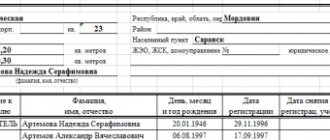Home / Complaints, courts, consumer rights / Services and consumer protection
Back
Published: September 22, 2018
Reading time: 4 min
0
847
The legislation of the Russian Federation (including banking and tax regulations) does not officially interpret the concept of “banking day”.
When using this phrase, experts mean the time period of a specific day of the work week during which employees of a financial institution (bank) carry out payment transactions dated by the current date. Payment transactions mean a significant volume of types of work carried out by bank employees. During the banking day, bank employees receive and serve clients, conduct credit transactions, finance capital investments and conduct cash transactions (acceptance and withdrawal of cash).
- How do the categories of “banking”, “working” and “calendar” days relate?
- Methodology for calculating the number of banking days
- Online operating hours calculators
In some cases, the duration of the banking period is equated to the total working time of the organization, but more often this term describes the operating hours of a particular bank, since the activities of a financial organization involve the use of technological operations. In this regard, the concepts of “banking” and “operating” day often describe the same time period.
During operating hours, bank employees accept documents for acceptance or withdrawal of funds, and also process, transfer and execute them. Often, to carry out one or another type of operation, a specialist requests confirmation from employees of higher departments, interacts with colleagues and always depends on the functioning and efficiency of the bank’s operating system. All these factors affect the actual duration and productivity of operating hours.
There is no single national or international standard for the duration, as well as the beginning and end of banking time. Each bank determines these characteristics individually and seals them with an internal document.
The approved regulations of a specific financial company establish the hours of the calendar working day, during which all transactions performed are dated on the same day. Working hours of a bank branch are not always equivalent to the time of operational customer service . It happens that the branch is still open to receive visitors, but cash settlement services are no longer provided. This suggests that the “banking day” is already over.
Please note that reliable information about the beginning, end and duration of the operating day, as well as the bank’s work schedule, is provided only by employees or official information resources of a particular financial institution.
Banking day in Russia – what is it?
Today, Russian tax and banking legislation does not have an unambiguous interpretation of the term “banking day”. In most cases, it is similar to the daily work schedule of a credit institution. In some cases, a banking day is shorter than an institution's working day. The duration of the operating day is established by order in any bank branch. Clients can find out such information using different methods. It is recommended to call the hotline and consult with operators. You can also visit a branch of the institution in person.
What operations are available at the end of the operating day?
The procedure for accepting documents after working hours is individual for each department and is described in detail in the banking service agreement.
Dividing the working day into operational and non-operational time allows you to competently implement the transition between different reporting periods for legal entities.
The bank's corporate clients can conduct transactions at any convenient time using remote services, with the exception of transactions related to the provision of paper documentation. For example, if you need to receive a bank confirmation of payment. In this case, you will have to visit the office during business hours.
All banks have their own checkout and cash service hours. The payment day at Sberbank lasts exactly as long as the operation of the electronic systems lasts. Today, a specific service schedule can be established for each client, and for those who use payment systems, transactions can be carried out around the clock.
Calculation of banking days
The user is able to independently calculate the banking days established by the agreement. The easiest way is to count all the working days of the organization when settlement transactions are carried out. The calculation should not include holidays or weekends. Thus, the calculation of banking days will contain only the working days of the institution. When drawing up any agreement, remember that the concepts of “banking day”, “calendar day”, “working day” are different. It is necessary to choose the most accurate formulation of the situation under consideration in order to avoid problems.
What does the term "banking day" mean?
A banking day is a calendar day on which customer service is provided. At the beginning of the day, the balance of incoming funds in foreign currency is revalued. At the end of the day, bank statements are prepared confirming compliance with established standards for servicing citizens. Also, a banking day opens operating hours for working with a correspondent account. Thus, the term considered means the performance of daily work duties by specialists of a branch of a credit institution.
Functions of banks
At the end of the article, we will give a more complete description of some of the functions of banks, which were repeatedly mentioned in the text.
Table 1. Main functions of banks
| Function | Description |
| Accumulation of funds | In addition to the formation of financial resources, banks are also focused on internal accumulation of funds, which contributes to economic growth. The accumulation of funds occurs mainly due to a dynamic deposit policy - if this is accompanied by a favorable macroeconomic “climate” in the country |
| Stimulating savings | The creation of conditions conducive to the accumulation of funds is created by fixing acceptable rates on deposits, guaranteeing the safety of depositors’ money, and a wide range of deposit services |
| Mediation in loans | This function is one of the most important for banks, which allows them to be called credit institutions. Taking out loans by clients contributes to the circulation of finances in the economy on 3 principles: -repayment; -urgency; -payment. |
| Mediation in payments | The initial task of banks, thanks to which they began to exist. In the context of a market economy, all households. subjects have bank accounts through which initial settlement occurs |
| Reproduction of credit routes of communication | The function implies the production of money using the resources of the banking system. The capabilities of this system include the expansion of loans and deposits through multiple increases in the monetary base |
Read more How much child support is required for a second child?
Length of banking day at a particular institution
The operational activities of modern banks involve conducting mutual settlements between several credit and financial structures. The generally accepted term “banking day” means the time of execution of financial transactions prescribed in the internal regulations of the organization. The schedule for paying out or accepting banknotes sometimes does not coincide in different branches of the same bank. To prevent confusion, customers are advised to contact the hotline or personally consult with employees of the branch of interest.
Comparison
Banking day is a period that is somehow present within the working day. An exception may be a scenario when an employee of a financial institution comes to work part-time and works, for example, from 11 a.m. to 3 p.m. In this case, his working day will be shorter than a banking day, within which he can, if necessary, perform cash transactions.
Thus, the fundamental difference between banking days and working days is that the criterion for determining the first is the specific type of activity of the employee. In this case, this is conducting cash transactions in a bank. In turn, the remaining working time of an employee of a financial institution will not be related to the banking day.
Having determined what the difference is between banking days and working days, we will reflect the criteria we have identified in the table.
The presence of an agreement for the provision of banking services allows a person to ask the question of the difference between a banking day and a working day. The first coefficient affects the measurement of payment terms, the second relates more to the employment contract. When concluding a contract, two parties are involved, each of which must know their rights and obligations.
Banking days in cash settlement services (RKO)

Legal entities must comply with established payment deadlines, otherwise there is a possibility of material losses. It is recommended to find out the length of the banking day at a specific financial institution. Relevant information can be obtained directly from branch employees or on the hotline. Typically, the time for making payments varies depending on the type of payment. The timing of individual transfers can reach several days. Delays are especially common on holidays, when the work schedules of many banks are not coordinated with each other.
Holidays non-working days in Russia for 2021
So, in Russia there are legally established twelve official holidays a year, some of which are public holidays. For example, Christmas Day does not have the status of a public holiday, although it is an official day off.
Among the holidays there are those that remain to us from previous historical periods, as well as new ones, the appearance of which is associated with the modern history of the country - with the establishment of the sovereignty of the Russian Federation and the change in state ideology. 1 - January 5 - New Year and New Year holidays. In Russia, since the introduction of Christianity, chronology began either from March or from the day of Holy Easter. In 1492, Grand Duke John III approved the decree of the Moscow Council to count September 1 as the beginning of the year.
Peter I, citing inconveniences in relations with European peoples, issued a decree to celebrate the New Year from the day of the Nativity of the God-Man, i.e. January 1 instead of September 1. Celebrating the New Year on September 1 was prohibited. Nowadays, this date is enshrined in the Labor Code of the Russian Federation (Labor Code of the Russian Federation) dated December 30, 2001 N 197-FZ, as amended. Federal Law of December 29, 2004 N 201-FZ. New Year holidays last from January 1 to January 5.
January 7 – Christmas. By law this is a day off. Two thousand years ago, in the small town of Bethlehem, an unprecedented event occurred - the Infant God, the Son of God, was born into the world. Jesus Christ was born supernaturally from the Virgin Mary, whom we have since called the Mother of God. The Nativity of Christ ends the forty-day Nativity Fast (St.
February 23 is Defender of the Fatherland Day. Existed back in Soviet times. On February 10, 1995, the State Duma of Russia adopted the federal law “On the Days of Military Glory of Russia.” In it, this day is named as follows: “February 23 - Day of the Red Army’s victory over the Kaiser’s troops of Germany in 1918 - Defender of the Fatherland Day.”
March 8 is International Women's Day. The first “international” women's day was celebrated in 1911 in four countries - Austria, Germany, Denmark and Switzerland, but on different days. In Russia, International Women's Day was first celebrated in 1913, but only in one city, and in 1914 throughout the country.
The year 1975 was declared by the United Nations as the “International Year of Women”, and March 8, at the suggestion of the USSR delegation, by decision of the same UN, received the official status of “International Women’s Day”.
May 1 – Spring and Labor Festival. It first appeared on the territory of the Russian Empire in 1890-1891. The original name was International Workers' Day. In the Soviet Union, the holiday was often called simply by the number - May 1 (May Day). In the Russian Federation it is celebrated as the holiday of Spring and Labor.
May 9 - Victory Day in the Great Patriotic War - is a sacred holiday for each of us, which has been celebrated since 1945. It is on May 9 that we especially strongly feel our responsibility for preserving the true history of our country, we feel proud of our long-suffering people and want to believe that the horrors of war will not happen again.
June 12 – Russia Day. Russia Day or Russian Independence Day, as this holiday was called until 2002, is one of the “youngest” public holidays in the country. In 1994, the first President of Russia, Boris Yeltsin, by his decree, gave this day national significance - the Day of Adoption of the Declaration of State Sovereignty Russia. And since 2002 - June 12 Fr.
November 4 – National Unity Day has been celebrated since 2005. This is not a new holiday, but a return to the old holiday after a long break (from 1917 to 2005).
We invite you to read: Are public holidays included in vacation - a detailed explanation of the question
On December 16, 2004, the State Duma of the Russian Federation simultaneously adopted amendments to the federal law “On the Days of Military Glory (Victory Days of Russia)” in three readings. One of the changes was the introduction of a new holiday - National Unity Day. There was an actual transfer of the state holiday from November 7 (it was the Day of Accord and Reconciliation) to November 4 (it became the Day of National Unity).
In the explanatory note to the draft law on
The “Production Calendar for 2021” for Russia, highlighting holidays and rescheduled days off for Banks of Russia, can be viewed hereMaterial updated 07/16/2019
The term banking day in supply contracts
Some contracts for the supply of goods or other products use the term “banking day” as the deadline for fulfilling obligations. The term in question does not have an unambiguous definition, so it is recommended to find out its wording in the document regulating the responsibilities of the two parties. Using a term without specifying a time frame will cause problems when making mutual settlements. Differences in the operating mode of credit institutions serving legal entities cause conflicts between counterparties.
Features of the operating day for legal entities
The conditions under which the payment day at Sberbank operates for legal entities are somewhat different from those established for private clients. This applies to both entrepreneurs working through web services and those served through bank branches. Let's highlight the main features.
Customer service time
The duration of the operating period depends on which method the client chose to carry out the cash settlement transaction. The deadlines are as follows:
- through the Sber branch - from 9.00 to 18.00 (local time);
- through the electronic service Business Online - from 7.00 to 23.00 (Moscow time).
All operations started during the specified period must be processed before its end. If a client tries, for example, to make a payment through an electronic account at the end of operating hours, he must take into account that his transaction will be processed only the next day.
Advice: when choosing a bank, entrepreneurs try to predict their future mode of using its services and determine whether the proposed operating day will be convenient for them.
Available money transactions
So, we found out what time the banking day is at Sberbank for legal entities. What operations are available to this category of clients during the specified period? Let's look at them:
- Opening and closing accounts.
- Transfers to other Sberbank clients.
- Interbank transfers.
- Processing cash documents.
- Maintaining existing accounts (credit and deposit).
- Reception and control of primary client documentation.
- Acceptance and issuance of cash.
All of the above actions can be performed both in a Sber branch and in its electronic business service. In addition, clients have access to services for monitoring their personal current account during operating hours:
- balance request;
- receiving statements;
- generation of reports on operations, etc.
At the end of the day, bank employees create a balance sheet for the day.
The difference between a banking day and a working day
The working hours of credit institutions are formulated in several terminological concepts. Therefore, some clients ask the question: what is the difference between a working day and a banking day? The first concept defines the duration of work of a banking institution, including time for customer service and other tasks that do not involve working with branch visitors. The second concept means the period when a bank branch receives visitors, makes payments or acceptance of monetary units, and processes financial transfers.
Payment order execution deadline
Banking institutions establish their own rules for accepting and processing payments. However, if we are talking about protected expense items, then their consideration and processing has clear deadlines, as well as payments marked “urgent”.
Each representative office has its own work schedule; accordingly, the central branch of Sberbank works seven days a week. By going to the website of the representative offices, you can familiarize yourself with the specific work schedule of each of them. In addition, there is information according to which you can find out contact numbers in a specific city or select the closest office.
According to the operating regulations, Sberbank processes payments that were processed in accordance with established standards. In particular, payments are executed on business days, except weekends and holidays. You can find out how long it takes for Sberbank to process payment orders directly from the person with whom the service contract was concluded or from a bank representative.

Thus, the execution of financial documents received from the client is carried out on the basis of documents received by the bank:
- in paper form – from 9:00 to 15:00;
- in electronic form from 09:00 to 17:00, and on Fridays and pre-holidays processing is carried out from 09:00 to 16:00.
The meaning of the concept "working day"
Often, the lack of a unified interpretation of banking terms causes confusion among users. As a result, clients suffer material losses or face payment delays. That is why it is recommended to understand what the concept of “working day” means. This is a period established by the bank, which implies the conduct of operational activities and servicing of branch visitors. Within the period under review, transfers, issuance and acceptance of cash units are carried out. You can find out the length of the day from the branch staff.
It is important to note that the working day lasts a little longer than the banking day. Although often the timing of both options coincides. A banking day can also be considered a calendar day during which employees are at work without serving clients. The duration of the banking day is determined by the internal regulations of the institution and may differ from the schedule for receiving visitors. Therefore, all clients are recommended to first find out the relevant information on the official resource of the credit institution or from the institution’s specialists.
Andrey Firsov
About the author : First education as a system administrator. The second is “Finance and Credit”. Total work experience 14 years. I am a regular author and resource administrator. I actively apply my knowledge in the information project lkbank.ru, where I am ready to answer any questions. Go to the author's page.
Features of the operating day
This concept refers to the part of a financial organization’s working hours when clients can make any transactions. In this case, documentation submitted during office hours must be processed and executed on the same day.
Before remote servicing came into use for modern citizens, bank employees spent a lot of time working with documents, so the working day was always shorter than the operating day. For example, if a department works until five o’clock in the evening, then the reception of papers ends at four o’clock. Within half an hour, clients could make payments, but a double commission fee was charged.







